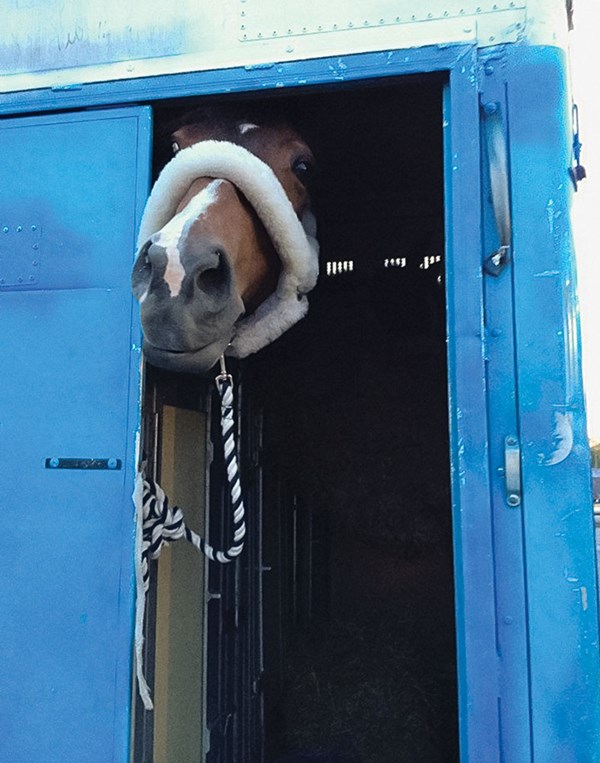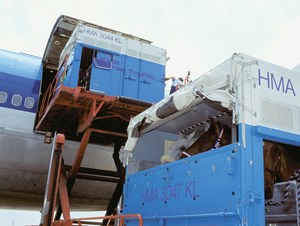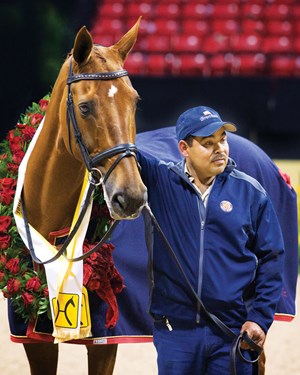
There are several things to consider when planning a trip to relocate your horse to a new region of the country or the world. Last month, we discussed how to select appropriate transportation, when to schedule travel and key items to pack so that your horse is safe and comfortable during his journey. In Part Two, four experts will cover what you need to know about additional training and grooming considerations, nutrition, hydration and tips for managing your horse’s work schedule when planning for a long-distance journey.
Adjusting Work Schedules
As your horse’s departure date approaches, you want to make sure that his training program is maintained but he isn’t exhausted for the trip. Ruben Palomera, former groom to U.S. Olympians Debbie McDonald and Adrienne Lyle, suggests lightening the workload in the days immediately before travel and keeping an eye on your horse’s muscles and legs in the days leading up to the journey.

“Liniments and magnetic blankets are great in helping with recovery,” says Palomera. “Standing wraps are also a good solution for the days that your horse has worked hard. You can also use the occasional poultice, but be cautious of skin reactions from overuse and avoid using it multiple days in a row.”
On travel day, just hand-walk and graze your horse, says dressage trainer Caroline Roffmann. When she travelled from her home base in Florida to the 2012 National Young Horse Championships in Lamplight, Illinois, she did not work the horses on shipping day.
“Upon arrival,I hand-walked and grazed the horses later in the day,” says Roffman. “The next day I hacked and gave the horses an easy day. The third day after arrival, I rode lightly and headed towards normal work.”
Palomera points out that the same recovery aids you use on hard workdays can be helpful after a long trip. Your horse has travelled a great distance and just because he has not been working under saddle does not mean that he has had a chance to rest.
Blanketing
Plan what blankets to pack before you travel, says Karin Ahlqvist, transport manager at the international horse transport company, The Dutta Corporation. “Horses don’t have blankets on when they fly because it is air-controlled and gets warm inside,” she says. “If they do, it is a light sheet, but we usually recommend nothing. You can store a blanket for them to use when they get off-loaded.”
Always pack for varying temperatures, says Meaghan Byrne, dressage trainer and former groom to international competitor Catherine Haddad-Staller. “If you start your trip in the middle of the night, it may be colder and the horse may need a sheet. As you continue your trip, the temperature may increase so you may need to take the blanket off or vice versa. Make sure to feel their chest and ears whenever possible to see if they are getting too hot or cold.”
Clipping

Many horses require a body clip before picking up a training program in a warmer climate. Palomera suggests waiting until you arrive before taking on this possibly high-stress task. “Just hand-walk your horse on arrival day,” says Palomera. “On the second day, before he starts working hard again, you can clip your horse.”
Here are six tips for clipping horses properly from Palomera:
1. Clip between feeding times, at the end of the day, to avoid extra stress.
2. Start by giving your horse a bath. A clean horse is easier to clip and his hair doesn’t wear on the blades as much.
3. Thoroughly dry your horse, especially his legs, with a clean towel.
4. This is the appropriate time to sedate a horse who requires it, as you need some time for the drugs to take effect.
5. Disinfect sharp clipper blades and lubricate them every 10 to 15 minutes.
6. Clip only with cold or slightly warm blades. If they become hot, wait for them to cool down or change them before continuing.
Feed, Water and Supplements
In the days leading up to departure, keep your horse’s feed the same but add an electrolyte and vitamin C supplement, says Palomera. He also encourages a preventetive treatment for horses prone to ulcers.
During your trip, offer your horse water every time you stop, says Byrne. Ensure that fresh water and a clean bucket are easily accessible throughout your journey. “When possible, stop every two hours to offer your horse water when trailering,” says Byrne. “This will keep him hydrated and give him a short break from the stress of riding through bumps and shifts in the road.”
Throughout the travel process, do not be afraid to ask for advice from your professional shipper, veterinarian or trainer. While this can be an easy trip, it certainly requires proper planning for things to go off without a hitch.
With consideration of appropriate travel methods and dates, your horse will get to his destination in the safest, most stress-free way possible. All that is left is adjusting your training program around your travel dates, making a packing list and checking with your veterinarian and shipper on medical requirements. Remember that proper nutrition, hydration and grooming will ease the stress of travel for your equine partner. Bon voyage and safe travels!











